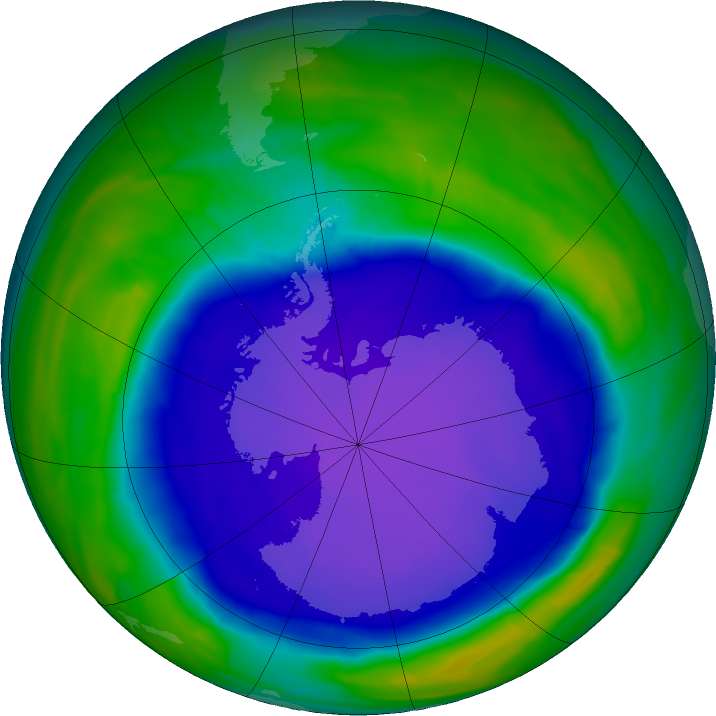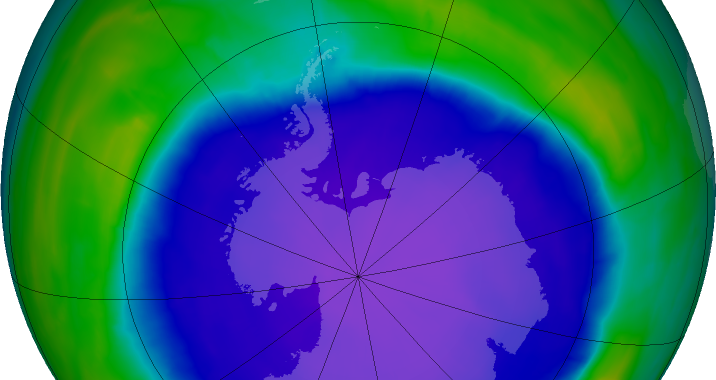
Conservative political commentator Matt Walsh took to Twitter last Wednesday to say that the widespread belief that humans are causing climate change is in fact a fallacy. The Daily Wire podcaster and columnist apparently knows this because past environmental issues we’ve been concerned about – namely acid rain and holes in the ozone layer – disappeared, never to be heard from again.
“Remember when they told us for years to panic about the ozone hole and then suddenly stop talking about it and no one ever talks about the ozone layer again?” Walsh tweeted. “This was also the time when they scared schoolchildren into believing that ‘acid rain’ was a real and urgent threat,” Walsh tweeted again.
It’s true that you don’t hear much about acid rain anymore, and discussions of humanity’s long-standing tendency to metaphorically kick the planet in the groin have been largely stripped away from the ozone layer to newer, flashier issues like sea level rise, rising global temperatures and the extinction of massive species served with a side of ecosystem collapse. (Although, if you know where to look, you can still find the ozone hole listing.)
You could conclude, as Walsh does, that acid rain and holes in the ozone layer just disappeared on their own and so were never anything to worry about — and that, by extension, current fears of climate change are similarly misplaced.
This would be the wrong way to take things. Ozone layer holes and acid rain have been addressed in many parts of the world. In these two cases, efforts to combat environmental problems have worked. Well, usually at least.
Like acid rain on your wedding day
Acid rain is produced when various chemicals such as sulfur dioxide and nitrogen oxides are released into the atmosphere, usually from the combustion of fossil fuels, emissions from vehicles and manufacturing and other industries. The compounds suspended in the air mix with water and fall to the ground as rain with a low pH, which is harmful to various types and corrosive metals and other materials that people use for buildings.
Acid rain caused serious problems in many areas around the world, especially where coal was used to generate electricity. In the US and other areas, it is no longer a problem just because various governments around the world have taken action.
The US Congress updated and tightened emissions regulations in 1990, and by 2003 the amount of sulfur dioxide raining down had decreased, for example, by 40 percent in the northeastern US. Between 1990 and 2019, the US saw a 93 percent decrease in sulfur dioxide emissions. Similar regulations also popped up in Europe and international agreements were signed to curb the issue. In 2002, The Economist called the fight against acid rain “the greatest green success story of the past decade.” Acid rain is still a problem, just not so much of one.
The story of the hole
In the 1980s, scientists were dismayed to discover that human activity was depleting the ozone layer. And it didn’t thin evenly; there was even a hole – to be precise, an extreme dilution – in the ozone layer over Antarctica. The hole was traced to certain gases — ozone-depleting chlorofluorocarbons (CFCs) — that were widely used in the 1980s, particularly in refrigerators, air conditioners and similar appliances.
The ozone layer helps protect the Earth by absorbing radiation at certain wavelengths, and the hole lets in more UV radiation from the sun. This in turn increases the levels of UV damage that living things experience, increasing the rate of skin cancer and potentially leading to an overall increase in mutation rates.
Like acid rain, the hole in the ozone layer prompted governments to take action. In 1987, countries around the world adopted the Montreal Protocol to protect the ozone layer by phasing out the chemicals that deplete it. This included a staggered phasing out schedule for some countries and the creation of a multilateral fund to provide money and technical support to some countries.
Again, like acid rain, the problem is not completely gone. By 2021, the Antarctic ozone hole grew to its 13e largest size since 1979. But overall trends are good.
What is going on?
It’s tempting to think that these weren’t really problems, but rather errors on the part of the scientific community or that even if they used to be a big problem, they aren’t problems anymore. However, neither of those are true. Acid rain, ozone depletion, climate change and biodiversity loss are all very real problems. The first two are less of a problem than they could be, thanks to some successful mitigation efforts.
Walsh’s tweets deliberately ignore a very well-documented history and really ignore vast amounts of scientific literature. Granted, it’s hard to get historical context in a tweet or two, but that’s no excuse for blatant errors like this.
Unfortunately, Walsh has about 1 million followers on Twitter and the tweets garnered over 41,000 likes. So while his tweets may have been just trashed comments, they probably have a significant effect on many people’s perceptions.

